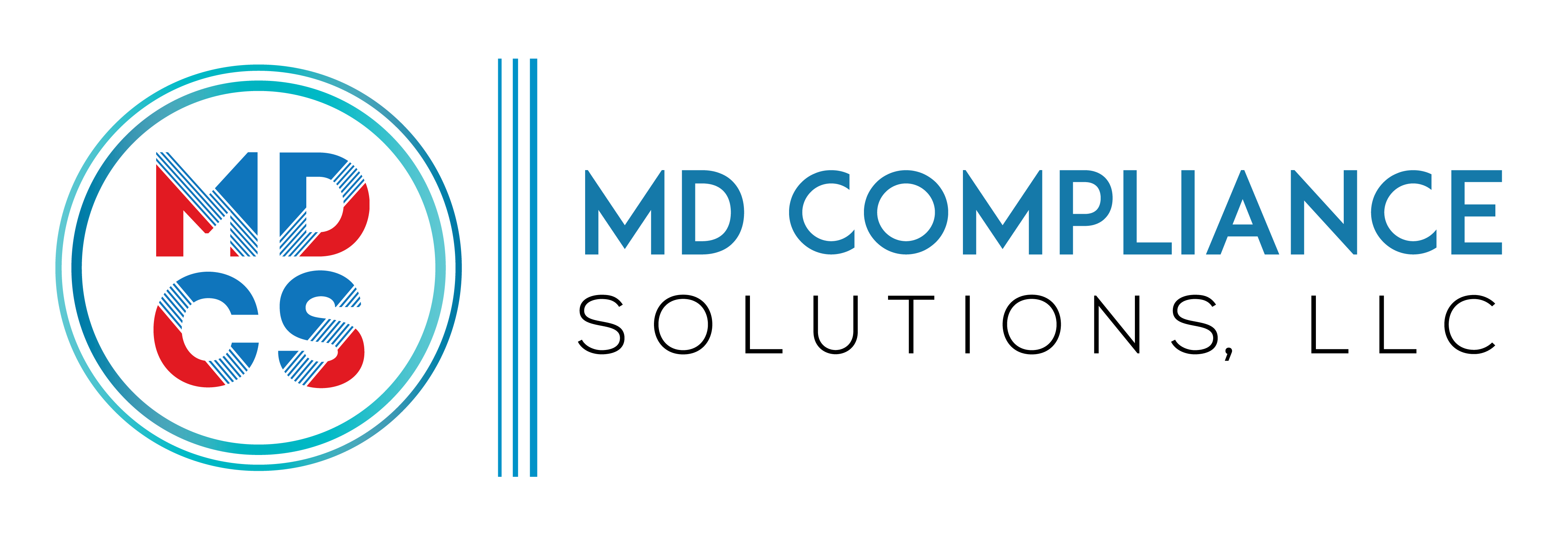Table of Contents
Did you know that risk adjustment in health care helps in allocating resources more effectively? It ultimately objective is to better cost prediction and patient health outcome management. Understanding how health care providers and insurance companies balance patient care and financial stability may appear difficult, but it all boils down to one key concept: risk adjustment. So, what exactly is risk adjustment in healthcare, and why is it so critical? If you are really interested, then keep reading on.
What is Risk Adjustment in Health Care?
Risk adjustment is a technique in health care that takes into consideration patients’ health status and associated expenditures when evaluating the performance of health plans or providers. It is a method of ensuring that individuals who care for sicker patients are not unfairly penalized and that resources are allocated properly and efficiently.
Importance of Risk Adjustment
Without risk adjustment, health insurers and clinicians may be incentivized to avoid high-risk patients, resulting in unfair and ineffective care. By accurately reflecting individuals’ health state, risk adjustment improves justice and equity in health care delivery and payment. Risk adjustment enables insurers to establish premiums that reflect the true cost of insuring a specific demographic. This guarantees they have enough cash to deliver healthcare services to all of their enrollees.
Understanding the Basics
At its core, risk adjustment is a statistical process that adjusts payments and performance metrics based on the anticipated cost of providing care to a specific patient population. This adjustment considers factors such as age, gender, medical history, and chronic conditions.
Key Components of Risk Adjustment
Key components include risk scores, which quantify the expected cost of care, and risk models, which use data to predict these costs. These components work together to ensure a fair distribution of funds and resources. There are codes that healthcare providers assign to patients based on their diagnoses. The Hierarchical Condition Category (HCC) approach divides diagnoses into categories with similar resource use. The precise codes utilized and their categorization have a considerable impact on the risk score. Some models may include other data points, such as test results or functional status, to provide a more complete picture of health.
The Purpose of Risk Adjustment
The primary goal of risk adjustment in healthcare is to assure equity and stability for both insurers and providers. Without risk adjustment, insurers may be tempted to choose healthy people, leaving providers with sicker patients and insufficient cash. Risk adjustment inhibits “cherry-picking” and offers a more equitable marketplace for providers.
It guarantees that plans and providers are fairly reimbursed for taking on higher-risk patients, so increasing access to care for everybody. Risk adjustment promotes a competitive private health-insurance market. With guaranteed coverage and community rating (premiums cannot change based on health status), insurers compete on issues such as service quality, rather than avoiding high-risk customers.
Impact on Health Care Providers and Patients
For providers, risk adjustment means more equitable comparisons and pay. Patients benefit from improved access to quality care, as physicians are motivated to take on and effectively manage higher-risk populations.
How Risk Adjustment Works
Risk adjustment is a series of actions that assure fair compensation to healthcare providers and stable premiums for insurers.
The Process of Risk Adjustment
The process begins with collecting comprehensive data on patient demographics and health status. This data is then used to calculate risk scores, which are applied to adjust payments and performance metrics accordingly. Understanding this process allows you to appreciate how important risk adjustment is in developing a more balanced and equitable healthcare system.
Factors Considered in Risk Adjustment
Factors include demographic information (such as age and gender), clinical diagnosis, and the existence of chronic illnesses. Socioeconomic position and geographic location may also be addressed to guarantee a comprehensive adjustment. Each patient is assigned a risk score based on the data collected.
The score compares the patient’s health state and projected healthcare costs to those of the average patient. Diagnoses are divided into categories (HCCs) based on resource consumption. Each HCC has a weight assigned to it. A numerical risk score is generated using a specific formula or model (typically prescribed by CMS) that takes into account patient demographics, HCCs, and their weights.
Types of Risk Adjustment Models
In healthcare, a variety of risk adjustment models are utilized, each with its own set of strengths and disadvantages. Here’s an overview of some of the more prevalent ones:
Hierarchical Condition Categories (HCC)
This is the most common model utilized in the United States, particularly in Medicare Advantage schemes. The HCC model groups patients based on the presence of certain conditions, each assigned a weight reflecting the expected cost of care. This model is widely used in Medicare Advantage plans. Does not fully reflect the complexities of patient illness or societal determinants of health; may be less accurate in younger or healthier groups.
Clinical Risk Groups (CRGs)
Patients are classified into clinically significant categories using CRGs based on previous clinical and demographic data. This approach can assist anticipate future health-care utilization and expenses.
Episode Risk Groups (ERGs)
ERGs are concerned with episodes of care, which group services offered for certain illnesses or treatments over a set length of time. This concept is suitable for bundled payment arrangements.
Ambulatory Care Sensitive Condition (ACSC) Model:
This approach focuses on identifying illnesses that are more likely to be managed in an outpatient setting, which may indicate higher healthcare consumption. It can assist identify high-need individuals who may require greater care coordination or preventive actions. Limited breadth may not capture the full range of factors influencing healthcare expenses.
Selecting the Right Models
The best appropriate model is determined by the unique program or circumstance. Consider factors such as the availability and quality of data. Is the goal to estimate overall costs, identify high-need people, or treat specific diseases? or Is the model appropriate for the age and health of the target population? Models may not only forecast costs, but also quality of care and patient outcomes. Understanding the many types of risk adjustment models and their limitations allows you to enable talks regarding their role in establishing a fair and successful healthcare system.
Implementing Risk Adjustment in Health Care
Implementing risk adjustment in healthcare necessitates a multi-step approach that includes coordination among multiple stakeholders. Implementation entails gathering data, selecting appropriate risk adjustment models, producing risk scores, and using these scores to change compensation and performance measures. Continuous monitoring and refinement are also necessary.
Best practices include collecting precise and full data, updating risk models on a regular basis, and training employees on the value and application of risk adjustment. Collaboration across departments is also critical to success. Remember, inaccurate coding and inadequate records might result in biased risk assessments and unfair rewards. Measures must be in place to avoid deliberate manipulation of codes to increase risk scores for illicit financial advantage.
Challenges in Risk Adjustment
Risk adjustment, which aims to build a fair and stable healthcare system, has a number of obstacles that can impede its efficacy. Some models may be less accurate for younger or healthier populations, thus resulting in under- or overcompensation for providers.
Common Challenges Faced
Challenges include data quality and completeness, model selection and accuracy, and the complexity of adjusting for diverse patient populations. Regulatory changes and technological limitations can also pose hurdles. Social determinants of health and other issues impacting healthcare consumption may not be appropriately addressed. Keeping up with the latest coding systems and applying them appropriately can be time-consuming and difficult for providers, particularly in smaller clinics. The financial incentives associated with higher risk ratings may encourage some practitioners to falsify codes or patient data to inflate scores for illicit financial gain. This weakens the system’s impartiality.
Overcoming These Challenges
To overcome these problems, invest in strong data systems, constantly refine risk models, and stay up to date on regulatory changes. Collaboration and training are also critical for successful implementation. Future models may include quality-of-care measurements alongside risk ratings to incentivize providers to provide not only cost-effective but also high-quality treatment. By recognizing these issues and striving to find solutions, stakeholders in the healthcare system may strengthen risk adjustment and guarantee it works as intended: creating a fair and stable system that rewards quality care for all patients.
The Role of Data in Risk Adjustment
Data is the cornerstone of the entire system and plays an important role in risk adjustment. It guarantees that risk scores accurately reflect patients’ health state, resulting in fair and equitable adjustments. Reliable data enables insurers to establish sustainable premiums, promoting a stable healthcare market. Data sources include electronic health records (EHRs), claims data, patient surveys, and public health databases.
Combining these sources yields a holistic picture of patient health. Precise data can assist identify high-risk patients and allocate resources for preventative care, perhaps resulting in long-term cost savings. Missing information in patient records might result in erroneous risk rankings, thereby undermining doctors who care for complex patients. Initiatives that promote consistent and correct coding standards within healthcare settings are critical to ensuring data quality.
Risk Adjustment in Medicare and Medicaid
Applies mostly to Medicare Advantage (MA), a program that provides private health insurance policies to seniors who prefer an alternative to regular Medicare. Ensure fair capitation payments to MA groups. Capitation is a fixed payment per enrollee, regardless of the services used.
How Medicare Uses Risk Adjustment
Medicare utilizes risk adjustment to calculate payments for Medicare Advantage plans. By taking into account participants’ health status, Medicare ensures that plans are appropriately reimbursed for caring for higher-risk patients. Encourages fair competition amongst MA plans, prevents cherry-picking of healthy beneficiaries, and provides access to coverage for all seniors regardless of health status. Risk adjustment determines the appropriate amount depending on participants’ estimated healthcare expenditures (as shown in risk scores). Plans with sicker members receive extra to cover their increased demands.
Medicaid and Risk Adjustment
Medicaid Managed Care Organizations (MCOs) provide coordinated care to Medicaid users (low-income people, families, and pregnant women). Medicaid also uses risk adjustment, especially in managed care systems, to ensure that payments match the health requirements of the enrolled population. This helps to ensure that vulnerable groups have access to care. Medicaid populations frequently encounter complicated health difficulties and social determinants of health that may be underrepresented in existing risk adjustment models.

Risk Adjustment and Health Insurance
In health insurance, risk adjustment helps insurers balance their financial risks. It ensures that plans that accept sicker patients are not disadvantaged, fostering a level playing field. Risk adjustment provides insurance firms with more predictable financial results, allowing them to price plans more correctly and better manage their risk portfolios. Risk adjustment promotes a more competitive marketplace by prohibiting insurers from cherry-picking high-risk individuals.
Insurers compete on customer service and network quality, not by denying coverage to people who require it the most. Knowing a patient’s risk profile might encourage preventative care, potentially lowering long-term healthcare expenses. Inaccurate coding to raise risk scores can result in improper payments. Regulations and audits are critical for ensuring the system’s integrity. In conclusion, risk adjustment is a critical component of a fair and stable health insurance market. It benefits both insurers and providers by increasing access to coverage and maybe encouraging preventative treatment.
Risk Adjustment and Payment Models
Risk adjustment affects a variety of payment schemes, including fee-for-service, capitation, and bundled payments. It ensures that payments are based on patients’ health status and estimated treatment costs. Examples are the Medicare Advantage program, accountable care organizations (ACOs), and value-based payment models. These models use risk adjustment to distribute payouts properly. Nevertheless, risk adjustment is an important tool for assessing fair compensation under various healthcare payment schemes. It encourages fairness, stability, and, potentially, efficiency in the system. However, continual efforts are required to secure accurate data, prevent manipulation, and ensure that payment models reward both cost containment and high-quality care for all patients.
Risk Adjustment and Patient Outcomes
The major focus of risk adjustment is not directly on patient outcomes, although it can have an indirect impact in a variety of ways. Risk adjustment promotes comprehensive and proactive care by assuring equitable compensation for high-risk patients. As a result, chronic illnesses are better managed and patient outcomes improve. Risk adjustment promotes preventative care and chronic disease management.
Aligning financial incentives with patient health leads to better outcomes and higher quality care. Risk ratings are calculated based on a patient’s current health and potential for future issues. They may not capture the effectiveness of treatments or interventions that are critical for improving outcomes. Overall, risk adjustment can help improve patient outcomes by assuring adequate resource allocation and exposing possibilities for preventative care.
Regulatory and Legal Considerations
In the United States, risk adjustment in healthcare is primarily administered by the Centers for Medicare & Medicaid Services (CMS) of the Department of Health and Human Services (HHS).
Regulations Governing Risk Adjustment
Various regulations control risk adjustment, ensuring that it is fair and effective. These include federal requirements for Medicare and Medicaid, as well as state-specific regulations for commercial insurers. The Code of Federal Regulations (CFR) sets the rules for risk adjustment under the Affordable Care Act. It defines important words, creates requirements for states conducting risk adjustment programs, and specifies data validation standards [1]. Health plans that participate in risk adjustment programs must keep documentation to verify compliance with applicable criteria. This documentation is subject to review by CMS and other authorized entities [2].
Legal Implications
Legal considerations include adhering to privacy rules, such as HIPAA, and ensuring that risk adjustment techniques do not discriminate against any patient group. Issues such as integrating new data sources and tackling social determinants of health may demand additional regulatory modifications. CMS has adopted stronger auditing procedures to prevent erroneous coding practices that could influence risk scores and result in improper payments [3].
Future of Risk Adjustment in Health Care
The future of risk adjustment in healthcare is anticipated to undergo major changes, driven by a need for increased precision, efficiency, and an emphasis on value-based care.
Emerging Inclinations
Emerging developments include the incorporation of socioeconomic determinants of health into risk models, the application of artificial intelligence and machine learning for more precise forecasts, and a greater emphasis on value-based treatment. Advanced analytics and machine learning could play a bigger role in automating risk adjustment processes, improving accuracy and reducing administrative burden for providers.
The Future Landscape of Risk Adjustment
The future of risk adjustment will likely see more personalized and precise models, better integration of data sources, and a stronger emphasis on improving patient outcomes through tailored care strategies.
Focus on Value-Based Care:
As healthcare transitions to value-based payment models, risk adjustment must reflect the quality and efficiency of care provided, not just the patient’s health status. This could entail adding indicators such as patient outcomes and healthcare utilization.
Addressing Equity Concerns:
Current models may not fully account for the social aspects that influence health. In the future, changes that take socioeconomic aspects into account may be made to ensure equitable reimbursement for all populations.
Shift from Retrospective to Prospective:
Currently, risk adjustment is mostly retroactive, based on prior claims data. The future may witness an increase in prospective risk adjustment, in which patient health is assessed closer to the point of care. This enables early interventions and more precise resource allocation.
Conclusion: Risk adjustment is a critical component of modern health care, providing fair and equitable distribution of resources and services. By accurately portraying individuals’ health state, it supports better outcomes and a more efficient health-care system.
Read More: Why is outsourcing to a medical coding and billing company beneficial to a medical practice?

